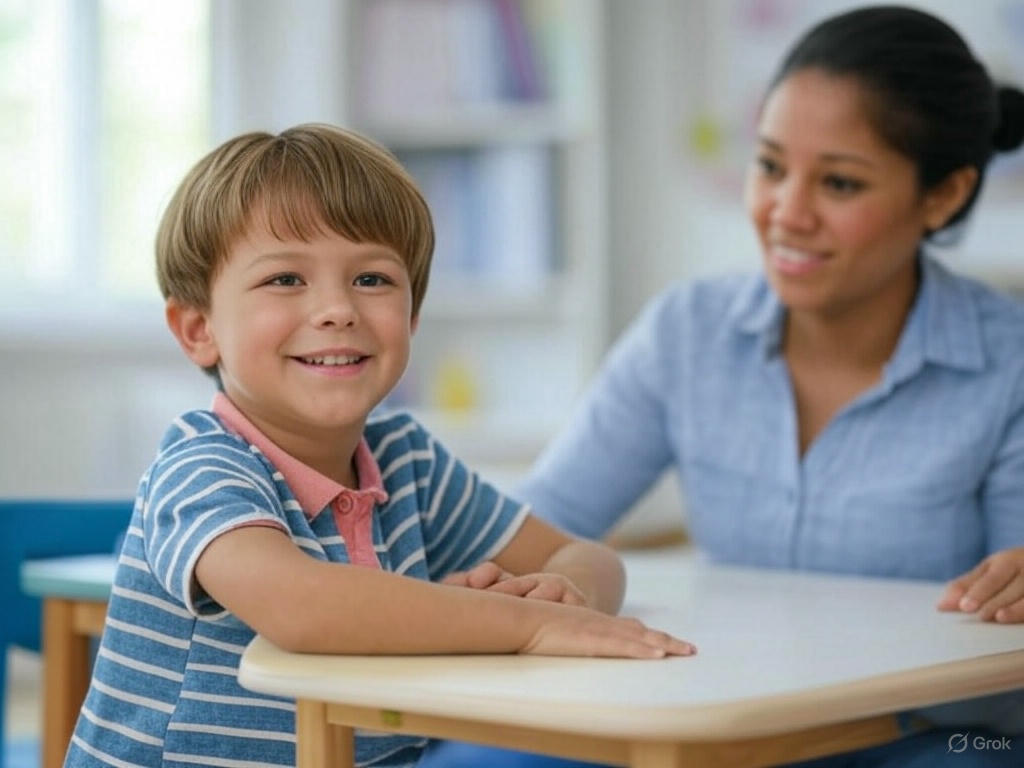Is Your Child Ready for School? A Comprehensive Guide
Understanding School Readiness
School readiness is a critical milestone in a child’s life. It refers to the ability of a child to meet the demands of a school environment, both academically and socially. Parents often wonder, “Is your child ready for school?” This question encompasses various aspects of development, including emotional, physical, and cognitive preparedness.
Research shows that children who are ready for school tend to perform better academically and socially. According to the National Education Association, early school readiness can significantly impact a child’s long-term success. Understanding what school readiness entails is the first step in preparing your child for this important transition.
School readiness is not just about knowing the alphabet or counting numbers. It also involves the ability to follow instructions, interact with peers, and adapt to structured routines. Parents should focus on holistic development to ensure their child is ready for school.
To assess school readiness, consider factors like your child’s ability to focus, communicate, and manage emotions. These skills are foundational for a successful school experience.
Key Developmental Milestones to Look For
Developmental milestones are essential indicators of whether your child is ready for school. These milestones include physical, cognitive, social, and emotional skills that children typically develop by a certain age.
For example, by age 4 or 5, children should be able to recognize letters, count to 10, and identify basic shapes and colors. These cognitive skills are crucial for early learning and classroom activities.
Physical milestones, such as the ability to hold a pencil, cut with scissors, and dress independently, are equally important. These skills demonstrate a child’s growing independence and readiness to participate in school tasks.
Social milestones, like sharing toys, taking turns, and expressing feelings appropriately, indicate emotional maturity. These skills help children build relationships with peers and teachers, making the school environment more enjoyable.
Social and Emotional Preparedness
Social and emotional preparedness is a cornerstone of school readiness. Children who can manage their emotions and interact positively with others are more likely to thrive in a school setting.
One way to assess social preparedness is by observing how your child interacts with peers during playdates or group activities. Does your child share toys, take turns, and resolve conflicts amicably? These behaviors are signs of readiness.
Emotional preparedness involves understanding and expressing feelings. For instance, a child who can articulate when they are sad or frustrated is better equipped to handle the challenges of a school day.
Parents can foster social and emotional skills by encouraging group activities, teaching empathy, and modeling positive behavior. These efforts can make the transition to school smoother for your child.
Cognitive Skills and Early Learning Basics
Cognitive skills are fundamental to answering the question, “Is your child ready for school?” These skills include problem-solving, memory, and the ability to follow instructions.
Early learning basics, such as recognizing letters, numbers, and shapes, are essential for academic success. For example, a child who can identify the letters of their name is better prepared for reading and writing activities.
Parents can support cognitive development by engaging in educational activities like reading books, playing memory games, and solving puzzles. These activities stimulate the brain and enhance learning capabilities.
Real-world examples, such as a child successfully completing a simple puzzle or reciting the alphabet, demonstrate cognitive readiness. These milestones are indicators that your child is ready for school.
Physical Development and Independence
Physical development plays a significant role in school readiness. Children need fine motor skills to hold pencils, use scissors, and complete other classroom tasks.
Gross motor skills, such as running, jumping, and balancing, are also important. These skills enable children to participate in physical education and playground activities.
Independence is another key factor. A child who can dress themselves, pack their lunch, and manage personal hygiene is better prepared for the demands of school life.
Parents can encourage physical development by providing opportunities for outdoor play, arts and crafts, and self-care routines. These activities build the skills necessary for school readiness.
Communication and Language Abilities
Communication and language abilities are vital for school readiness. Children need to express their needs, understand instructions, and interact with peers and teachers.
By age 4 or 5, most children should be able to form complete sentences, ask questions, and follow multi-step instructions. These skills are essential for classroom participation.
Parents can support language development by reading to their child, engaging in conversations, and introducing new vocabulary. These activities enhance communication skills and prepare children for school.
Real-world examples, such as a child successfully asking for help or participating in a group discussion, highlight the importance of communication in school readiness.
Building Routines and Structure at Home
Establishing routines and structure at home is crucial for preparing your child for school. Consistent schedules help children understand expectations and adapt to structured environments.
For example, setting regular meal times, bedtime routines, and study periods can create a sense of stability. These routines mirror the structure of a school day, making the transition easier.
Parents can involve their child in creating routines. For instance, let your child choose their bedtime story or help pack their lunch. This involvement fosters independence and readiness.
Building routines at home not only prepares your child for school but also strengthens family bonds. A structured environment supports emotional and social development, key components of school readiness.
Assessing Your Child’s Attention Span
Attention span is a critical factor in determining if your child is ready for school. Children need to focus on tasks, follow instructions, and participate in classroom activities.
Parents can assess attention span by observing their child’s ability to complete activities like puzzles, coloring, or listening to a story. A child who can focus for 10-15 minutes is likely ready for school.
Strategies to improve attention span include limiting screen time, engaging in interactive activities, and providing a quiet environment for focused tasks.
Real-world examples, such as a child successfully completing a craft project or listening attentively during storytime, demonstrate readiness for school. These behaviors indicate a developing attention span.
Partnering with Teachers and Educators
Partnering with teachers and educators is essential for a smooth transition to school. Open communication helps parents understand their child’s progress and areas for improvement.
Parents can attend orientation sessions, parent-teacher meetings, and school events to build relationships with educators. These interactions provide valuable insights into your child’s readiness for school.
Teachers can offer guidance on developmental milestones, social skills, and academic preparedness. Collaborating with educators ensures a holistic approach to school readiness.
For children with special needs, partnering with inclusive education programs can be particularly beneficial. Learn more about disability screening and inclusive education to support your child’s unique needs.
Tips for a Smooth Transition to School
A smooth transition to school sets the stage for a positive educational experience. Parents can prepare their child by visiting the school, meeting teachers, and discussing what to expect.
Encourage your child to ask questions about school. Addressing their concerns can alleviate anxiety and build excitement for this new chapter.
Pack familiar items like a favorite snack or toy to provide comfort during the first few days. These small gestures can make a big difference in easing the transition.
Remember, every child is unique. Tailor your approach to your child’s needs and personality to ensure they are ready for school.
Conclusion
In conclusion, answering the question “Is your child ready for school?” involves assessing various aspects of development, including social, emotional, cognitive, physical, and communication skills. By focusing on these areas and partnering with educators, parents can ensure a smooth transition to school.
Remember, school readiness is not a one-size-fits-all concept. Every child develops at their own pace. By understanding your child’s unique needs and milestones, you can confidently prepare them for this exciting journey.
For additional resources on disability screening or inclusive education, visit Prashast.org.
FAQ
- What is school readiness?
- School readiness refers to a child’s ability to meet the demands of a school environment, including academic, social, and emotional preparedness.
- How can I assess if my child is ready for school?
- Assess your child’s readiness by observing their developmental milestones, social interactions, cognitive skills, and independence. Ask yourself, “Is your child ready for school?” based on these factors.
- What are some tips for a smooth transition to school?
- Visit the school, meet teachers, establish routines, and address your child’s concerns to ensure a smooth transition. Familiar items like a favorite snack can also help.
- Where can I find resources for inclusive education?
- Visit Prashast.org for resources on disability screening and inclusive education.



